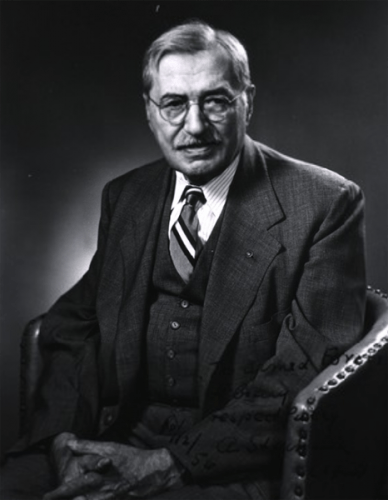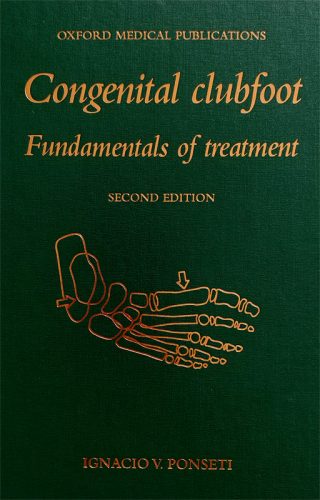I trained my fingers to palpate the joints and bones and feel their motions both in normal feet and in clubfeet. Based on these studies, I developed and refined a uniform type of treatment in the late forties.
SAD CONLUSIONS
It was in the 1940s when Ponseti arrived in Iowa. An outstanding world-famous doctor, Arthur Steindler, MD, an orthopaedist and a high class surgeon, was working at the University of Iowa. His excellent Viennese education contributed to his high level of therapeutic skills. A great number of young doctors travelled to Iowa in order to learn from him. At the time when young Ignacio came to Iowa, orthopaedic treatment was at a very high level there and had an unquestionable reputation in the world. Ponseti’s task was to study the clubfeet that had previously been treated by Dr Steindler. While assisting him in numerous clubfoot surgeries and reviewing a number of medical records, Ponseti realized that the outcomes of any invasive surgeries on feet with this deformity (cutting ligaments and tendons, muscle transfer) are not good for patients because they cause a number of health problems: ankle movement restrictions, pain, severe arthritis, stiffness. Feet that had been operated became weak, inflexible and frequently required further operations. It was a vicious circle that did not solve problems, but caused them instead, affecting patients’ quality of life. All this prompted Ignacio to search for solutions other than those he had known, i.e. operations, or those that did not produce long-term effects, i.e. the Kite method.
In the 1940s, we were doing many posteromedial releases and I saw that most of the important ligaments of the tarsus had to be severed to loosen the subtalar and midtalar joints so that the foot could be abducted under the talus. When operating on relapses, I noticed severe scarring in the foot and stiffness in the misshapen joints. The posterior tibial and toe flexor tendons that had been lengthened in the first operation, were matted and immobilized in a mass of scar tissue. After a few years of this experience, I was convinced that surgery was the wrong approach for treatment of clubfoot.
AMBITION
Ponseti’s work on the new method included studies of 22 patients who had been treated surgically in 1920 by Dr Steindler. He examined the X-rays of those patients’ feet thoroughly, studied their medical records and numerous laboratory tests. Since the population of Iowa was relatively stable throughout time, Ponseti could easily trace patients long after they had been treated and analyse the effects of this treatment years afterwards. For 18 months Ponseti studied the foot anatomy: its anatomy, functionality, biomechanics as well as pathology. He spent many hours in the prosectoral hospital analysing the foot structure of stillborn babies (as well as adults) with clubfoot deformity in order to find out more about this condition. He thoroughly examined the bone system, the structure of joints and connections between tarsal bones, the structure of muscles, ligaments and tendons.
I discovered that this was so based on cineradiography of clubfeet I had partially or fully reduced without surgery. From dissections of normal feet of children and adults in the anatomy department and of clubfeet of stillborns, I fully under-stood the mechanism of the interdependent movements of the tarsal bones and realized that clubfoot deformity was simple to correct. The Huson thesis, An Anatomical and Functional Study of the Tarsal Joints, published in 1961 in Leiden, Holland, corroborated my understanding of the functional anatomy of the foot. I conceived, therefore, that the displaced navicular, cuboid, and calcaneus could be gradually abducted under the talus without cutting any of the tarsal ligaments.
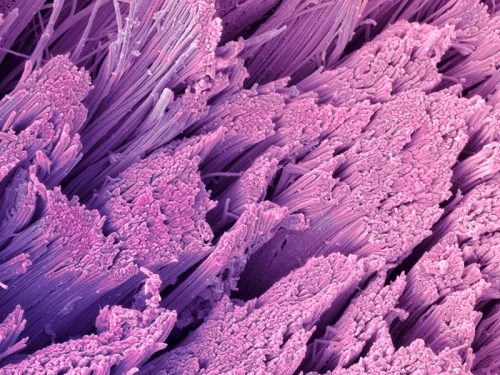
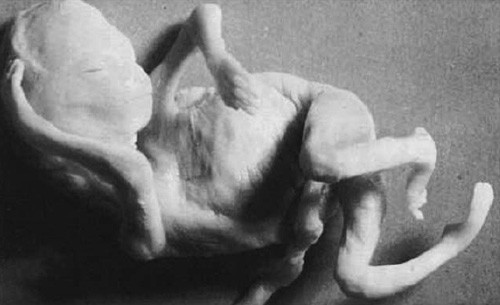
While examining the ligaments and tendons obtained during numerous clubfoot surgeries and analysing the same structures in babies in the prosectorium, he discovered that the ligaments of the pathological foot contain plenty of new collagen with well-preserved cell structure and a spherical cell nucleus. It was densely packed and corrugated, and was very responsive to stretching without damage. If tendons, ligaments and muscles can be stretched quite easily, other components, such as cartilaginous bones, will also tend to do so. Gentle manipulations stretching the tight medial ligaments should allow for some correction of bone deformations. The joints will be remodelled if the stretching is retained in the plaster cast for 5 to 7 days so that they are given time to stretch slowly and smoothly. Discoveries concerning collagen and the development of functioning of independent movements of tarsal bones (they work autonomously, but moving one of them causes a series of changes in others) contributed to the development of a NEW METHOD of treatment of clubfoot deformity. Significantly, the new method denied the validity and effectiveness of the existing non-invasive treatment of the deformity, i.e. the Kite method, by proving its faults based on the understanding of functional anatomy.
OFFICIALLY SINCE
IMPLEMENTATION
Ponseti implemented his method in patients in the years 1948 to 1956 at the University of Iowa. His first patient was ROSS SNYDER. The new method involved changing the way the foot is stretched, putting on plaster casts in a specific way and performing a minor surgery which eliminated the need for surgical interventions. In order to maintain the treatment effect, a foot abduction brace was used. During foot stretching (redressing, manipulation), Ponseti worked very gently and slowly, using nothing but his hands. The cast he put on was specific; it was long, toe-to-groin, but its characteristic feature was that the knee was bent at a 90° angle and the cast was perfectly modelled around the ankle. Such a long leg cast prevented talus bone rotation. After a week, the cast was changed and the procedure was repeated until the foot obtained correct alignment. The joints responded slowly, just as Ponseti had predicted, and in the way he had observed. A simple procedure of cutting the Achilles tendon excluded the need for surgical interventions and the patient did not have to spend a few days in hospital. The use of the abduction brace to maintain the treatment effects guaranteed the foot flexibility and no returning back to the defective position. The measures Ponseti applied were… cheap. The treatment did not require any advanced techniques or equipment.
THE GREEN PONSETI BOOK
Following the publication of an article on a new clubfoot treatment method in “Journal of Bone & Joint Surgery” in March 1963, Ponseti received a wave of criticism and a number of accusations from fellow orthopaedists. The article was misunderstood, or not thoroughly studied, which was the reason why not many doctors became familiar with the new method and started to use it. This did not discourage the author himself from continuing treatment with this method, because the treatment outcomes spoke for themselves. It was not until after 1996 that the method began to increase in popularity. This was achieved owing to a book written by Ponseti about congenital clubfoot and its non-surgical treatment method that he had developed. It was Ponseti’s wife who contributed to writing this “green book”, motivating him to leave behind this valuable heritage. The book in the dark green cover has become a “bible” of non-surgical treatment of the deformity for so many doctors.
It is hard to believe that it took almost 50 years to popularise the Ponseti method! Why? This question was most accurately answered by Dr John Herzenberg, who, as he said about himself, was initially very sceptical about this innovation. He considered Ponseti’s idea to be unnecessary “fun”, which will eventually lead to surgery anyway. Fortunately, he made a try, went to Iowa, learned from Ponseti himself and is now his ardent fan.
THE POWER OF THE INTERNET
The popularity of the Ponseti method is actually down to the Internet! It has undoubtedly contributed to its dissemination. Parents of children who were under Papa Ponseti’s care began to widely share the outcomes of their children’s treatment and describe their stories. This widespread wave of parents’ enthusiasm has triggered great turmoil in the medical world. Parents learned about the Ponseti method from the Internet and demanded to treat their children with it, somewhat forcing their doctors to make changes! From a little-known method 60 years ago, until now the Ponseti method has spread widely among parents all over the world, becoming the standard treatment for clubfoot deformity. Even today, the Ponseti method is still developing on the Internet, providing a range of useful information about the treatment itself, but also dealing with things that help parents to understand the defect and the treatment, to endure the time of casting and bracing, and highlight important aspects of the treatment and care of a child with congenital clubfoot.
Despite a difficult beginning, the Ponseti method is now approved by most paediatric and orthopaedic associations as the “treatment of choice”.
In 2006 The American Academy of Paediatrics and the World Health Organisation referred to the Ponseti method as the “GOLDEN STANDARD OF TREATMENT“.
TOO CHEAP…
The Ponseti method is… cheap. No special measures or supplies are needed for its implementation. It does not require much space or the child’s stay in hospital. This also makes many doctors reluctant to adopt it, because it does not produce benefits. What is more, correcting a small foot is not as exciting as performing spectacular operations. Therefore, for many doctors, the Ponseti method is not very interesting or cost-effective. This approach certainly pushes many children, especially in poorer countries, away from the treatment due to a lack of qualified personnel. On the other hand, when there is no need for considerable financial investment, the treatment of children with clubfoot in those countries produces many successfully treated feet, often bringing children back to a normal and active social life.
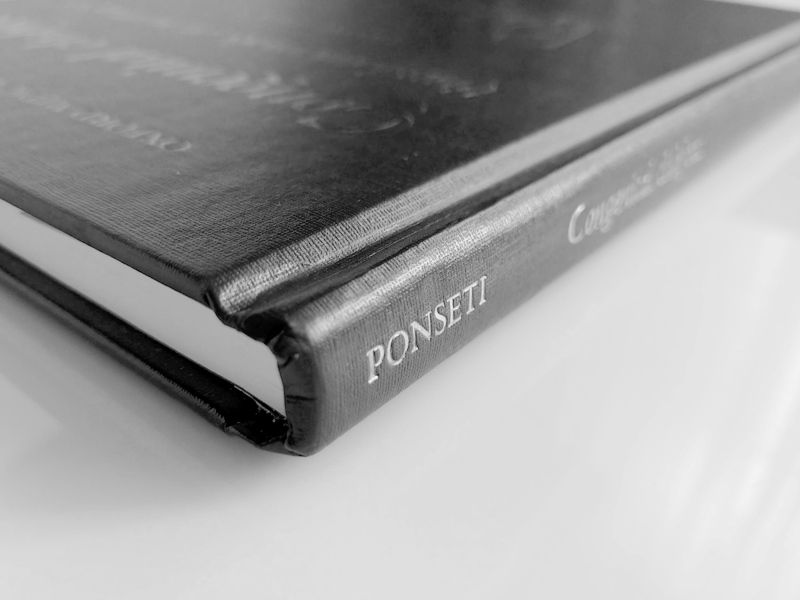
SOURCES
RESEARCHES & STUDIES:
1. Ponseti I.V.: “Congenital Clubfoot. Fundamentals of treatment” (2nd edition)
2. Ponseti I.V., Smoley E.N.: “The Classic: Congenital Club Foot: The Results of Treatment.”
3. Ponseti I.V., Campos J.: “Observations on Pathogenesis and Treatment of Congenital Clubfoot.”
4. Ponseti I.V., Morcuende J.A. et al.: “The Effect of the Internet in the Treatment of Congenital Idiopathic Clubfoot.”
5. Wilcox C.: “A Healing Touch.”
6. “The Ponseti Method – An Internet Success Story!”
7. “How Parents And The Internet Transformed Clubfoot Treatment?”
8. Cook T.M.: “How Iowa doctor Ignacio Ponseti changed the lives of children around the globe?”
PHOTOS & GRAPHICS:
1. Dr Arthur Steindler
2. 17-weeks old fetus: “Congenital Clubfoot. Fundamentals of treatment” (2nd edition)
3. Collagen fibers
4. Ponseti book photos: own

